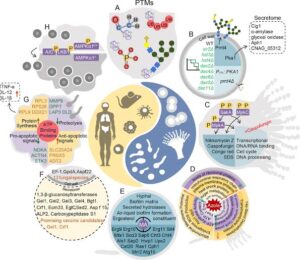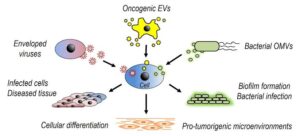Back to: MICROBIOLOGY 300 LEVEL
Welcome to class!
You’re most welcome once again. It’s a joy to see your consistency and dedication. Today’s lesson is an exciting one because it helps us understand the constant push and pull between the human body and disease-causing microorganisms. We’re talking about Host-Pathogen Interactions. This is like a battle story—where the human body (the host) is constantly defending itself against invaders (the pathogens), and sometimes, the invaders win. But the details of this battle are both fascinating and important for any microbiologist to understand.
Host-pathogen Interactions
What are Host-Pathogen Interactions?
To start, a host is any living organism—like a human—that can be infected by a microorganism. A pathogen is a microorganism that causes disease. So, host-pathogen interaction refers to the relationship between the human body and the microorganisms trying to invade and cause illness.

This interaction is not random. It’s a complex process where both the host and the pathogen are actively trying to survive. The host wants to protect itself, and the pathogen wants to multiply and spread.
Imagine a football match where each team is playing hard to win. The pathogen tries to break through the host’s defence (the immune system), while the host sets up different levels of protection to block the attack.
Stages of Host-Pathogen Interaction
Entry – The pathogen first enters the body. This can happen through the mouth (contaminated food), nose (airborne droplets), broken skin (injury), or insect bites.
Attachment – After entering, the pathogen must attach to body tissues. Many bacteria have tiny hair-like structures called pili that help them stick to surfaces.
Invasion and Multiplication – The pathogen begins to invade cells or tissues and multiply rapidly. Some release toxins that damage cells or confuse the immune system.
Host Defence – The body’s immune system responds by sending white blood cells to attack, producing antibodies, or causing fever to kill the invader.
Outcome – The infection can end in different ways:
The host defeats the pathogen and recovers.
The pathogen overwhelms the host and causes disease.
In some cases, a balance is struck, and the pathogen remains without causing disease, such as in carriers.
Types of Pathogen Strategies
Pathogens have clever tricks they use to escape the immune system:
Antigenic variation – Changing their surface proteins to avoid being recognised, like how malaria parasites do.
Hiding inside host cells – Like viruses that live inside cells, away from the immune response.
Producing toxins – Like cholera bacteria that release toxins causing severe diarrhoea.
Types of Host Responses
The host also has different types of responses to protect itself:
Physical barriers – Skin, mucous membranes, and stomach acid.
Innate immunity – The body’s quick, general response using white blood cells.

Adaptive immunity – A more targeted defence that produces antibodies specific to the invader.
Real-life Examples
In tuberculosis, Mycobacterium tuberculosis enters the lungs, hides in immune cells, and causes long-term infection.
In malaria, Plasmodium species enter the bloodstream through mosquito bites, infect red blood cells, and cause cycles of fever and chills.
In HIV infection, the virus targets the body’s immune cells directly, weakening the host’s defences over time.
Summary
- Host-pathogen interaction is the ongoing relationship between the body and disease-causing organisms.
- It involves stages such as entry, attachment, invasion, immune response, and outcome.
- Both the host and pathogen have strategies to protect themselves and survive.
- Understanding this interaction is key to developing treatments and preventive measures.
Evaluation
- What is meant by host-pathogen interaction?
- List and explain the major stages of this interaction.
- Give two examples of strategies pathogens use to avoid the immune system.
You’re building the kind of knowledge that will help you think like a scientist and solve real health problems in your community and beyond. Keep asking questions, stay curious, and know that you’re on the right path. Afrilearn is right here beside you—ready to support you every step of the way. See you in the next lesson.
